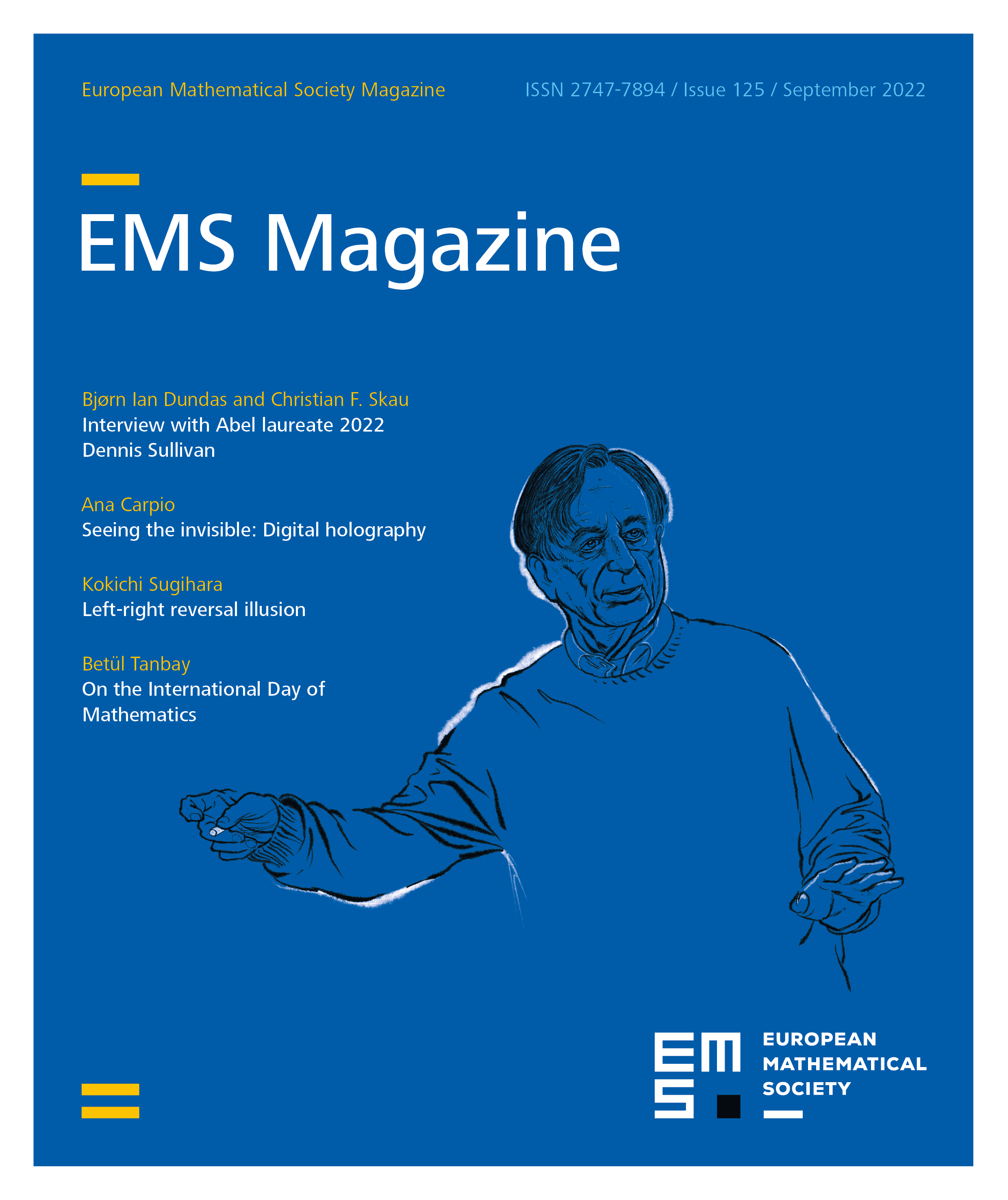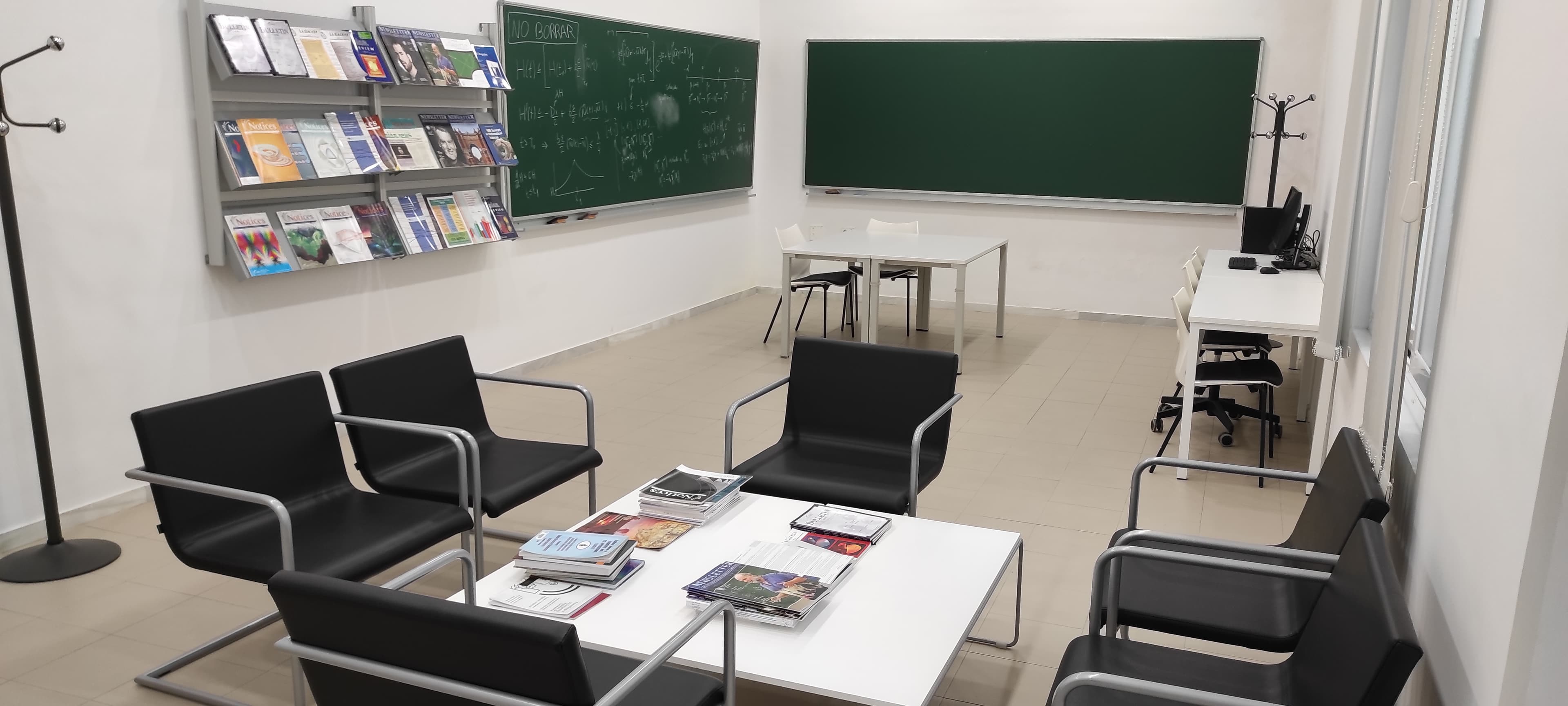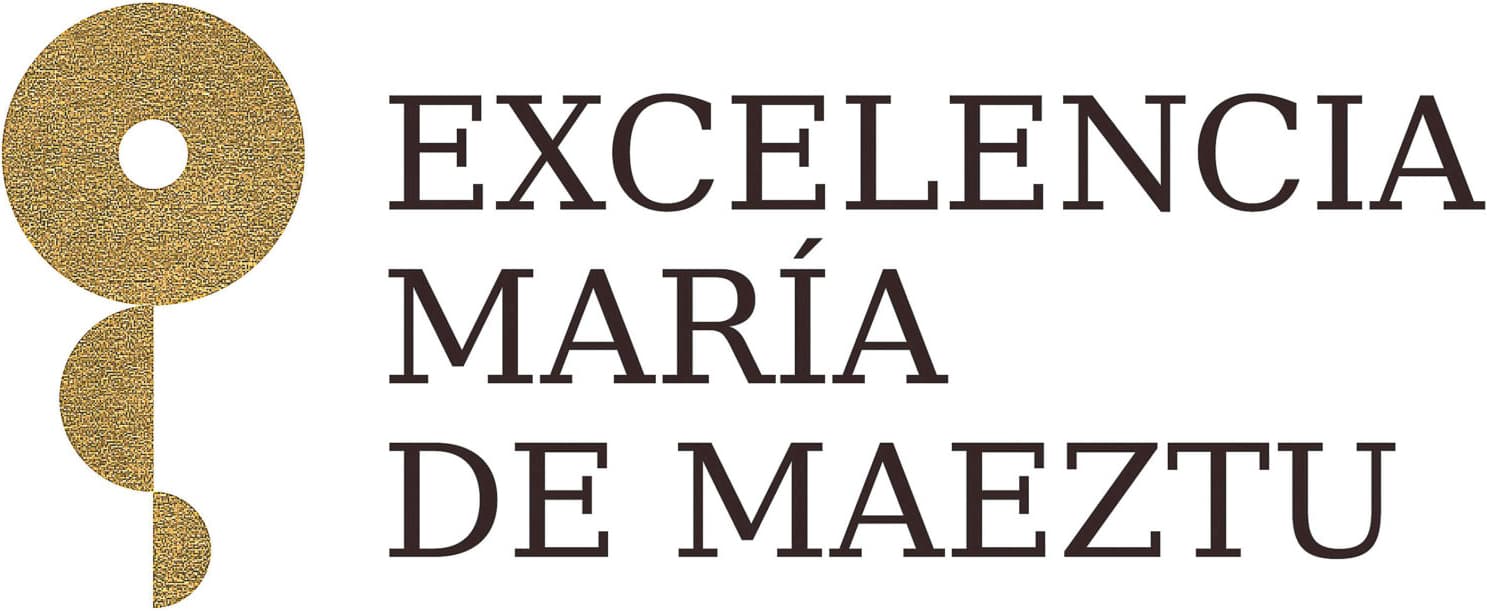Logo of IMAG
©All rights reserved.
Structure, objectives, and facilities
IMAG is the acronym for the Institute of Mathematics of the University of Granada (UGR). The institute was officially created in May 2015, although its activities started in 2013 as one of the four venues of the Spanish Institute of Mathematics (IEMath), a competitive national project today discontinued.
The fundamental mission of IMAG is to carry out scientific research and specialized training in all areas of mathematics. This mission is developed by accomplishing actions of different nature:
Supporting external researchers that collaborate with members of the institute.
Holding research seminars and conferences of international importance.
Carrying out Master and PhD programs in mathematics.
Organizing strategic events aimed at bringing mathematics and society together (outreach, gender activities, etc.).
The institute building is located at the Campus Center, Rector López-Argüeta S/N.
©All rights reserved.
IMAG facilities are located in a building donated by the Spanish National Research Council (CSIC), at approximately 500 meters from the Science Campus of the UGR. In its three floors, the building includes a conference room, two class and seminar rooms, two meeting rooms, 13 individual offices, and 37 posts distributed in 8 multiple offices, reading area, library, printer and computer rooms, and a warehouse. Equipment includes blackboards, electronic interactive whiteboards, video projectors, and a videoconferencing system. All offices have desktop computers connected to the UGR network, and several laptops are available for use. Printing needs are covered by three copier-printers installed on network. Besides Ethernet connections in the offices, a wireless internet connection is available everywhere in the building. As part of the UGR research infrastructure, electronic access to databases and journals is also available.
IMAG provides common areas for discussion and reading in a relaxed atmosphere, besides offices and seminar/conference rooms.
©All rights reserved.
Conference room at IMAG
©All rights reserved.
Research lines and activities
The institute is currently populated by more than 100 researchers from different countries around the world, particularly interested in four main areas of research, listed below.
A. Modeling and differential equations
A.1 Modeling of physical and biological processes
A.2 Geometric and nonlocal partial differential equations
B. Geometric and physical shapes
B.1 Geometric analysis
B.2 Mathematical physics
C. Linear and nonlinear infinite-dimensional analysis
C.1 Geometry and structure of Banach spaces
C.2 Operators on Banach spaces and Banach algebras
C.3 Nonlinear geometry of Banach and metric spaces
D. Statistics and operations research
D.1 Stochastic modeling and forecasting
D.2 Data science
D.3 Applications/data-driven research
The institute participates in four Master and PhD math programs, all with Excellence Awards from the Spanish National Research Agency (AEI). Special mention is owed to the program “Mathematics”, coordinated by UGR and participated by four other Andalusian universities, whose component at UGR is entirely developed at IMAG.
The above research and training activities at IMAG are complemented by Transfer of Knowledge and Culture/Outreach Services.
Interaction of researchers in different domains has proven essential for strengthtening the scientific life at IMAG.
©All rights reserved.
Some numbers and people at IMAG
The intense research activity of our institute is particularly shown by indicators pertaining to the pre-pandemic period. From 2016 to 2020, IMAG hosted 21 workshops and meetings, two three-month international Doc-Courses on specific topics, at least 270 seminars and colloquia, and more than 370 external visits of researchers, of which approximately one half were foreigners.
IMAG has a solid and visible position in the international arena. It is headed since its opening by Joaquín Pérez, an internationally reputed leader in the differential geometry of minimal surfaces. Among international projects led by members of the institute, we highlight the recent ERC Advanced Grant in Holomorphic Partial Differential Relations (2022–2027) by F. Forstnerič (external member of IMAG and long-term collaborator, University of Ljubljana, Slovenia), the ERC Advanced Grant in Nonlocal PDEs for Complex Particle Dynamics (2020–2025) by J. A. Carrillo (external member of IMAG, currently professor at Oxford University, former graduate and PhD student at UGR, and one of the leaders of the PDE group at IMAG), and the ERC Starting Grant in Analysis of Moving Incompressible Fluid Interfaces (2015–2022) by F. Gancedo (external member of IMAG and now assistant professor at University of Seville).
Besides its role as a research institute of the UGR, IMAG is one of the two current venues (the other being IMUS, the Institute of Mathematics of the University of Seville) of the recently approved Andalusian Institute of Mathematics (IAMAT), a new structure that aims to strengthen research in mathematics at the regional level, together with other Andalusian universities.
Excellence Seal “María de Maeztu”
The excellent level of mathematical research at IMAG is supported by more than 25 research projects at international, national, and regional levels, awarded to members of the institute and currently in execution. As a consequence of its successful trajectory, starting in January 2022 IMAG enjoys a “María de Maeztu Excellence Unit” accreditation by the AEI, funded with almost two million euros fora period of four years. This is an extremely competitive program by the AEI which seeks institutional strengthening and is aimed at centers and units of excellence in the public sector and private non-profit research institutions, whose scientific leadership is proven at an international level, with capacities to decisively contribute to advancing on the frontier of knowledge and generate high-impact results, as well as to exert a driving effect on the Spanish science, technology, and innovation system.
Logo of the Program of Excellence “Maria de Maeztu” by the Spanish Research Agency (AEI)
©All rights reserved.
Present and future projects
As part of the IMAG’s international strengthening policy, the institute has recently associated with the Banff International Research Station (BIRS, Canada) in hosting a series of research workshops that are part of the scientific program of BIRS. This is one of the key actions undertaken by IMAG within the framework of the María de Maeztu Seal. The pilot program will begin in 2023, and it is planned that starting in 2024, IMAG will function as a center associated with BIRS. In this way, IMAG is the first European center associated with BIRS, offering its excellent scientific programs with easy access to the European mathematical community, with the rich natural and cultural backdrop of Andalusia.
Another direction in which the institute projects substantial growth in the coming years is in the area of artificial intelligence. The environment of Granada, with the IA Lab co-partnered by UGR and the international technology companies Indra and Google, will undoubtedly be a fertile ground for the development of applied research in mathematics for data analysis and the transfer of knowledge to society and business.
Despite having a relatively short trajectory, the institute is the continuation of an intense international research activity that has been carried out in the mathematics section of the UGR for more than 30 years. Several generations of UGR mathematicians laid the foundations, and now the IMAG is reaping the rewards while projecting its image with increasing weight at the international level.
Email: imag@ugr.es Website: imag.ugr.es
Cite this article
Ginés López, Jose A. Cañizo, Joaquín Pérez, IMAG, the Institute of Mathematics of the University of Granada. Eur. Math. Soc. Mag. 125 (2022), pp. 34–37
DOI 10.4171/MAG/97





